American plum line pattern virus
American plum line pattern virus (APLPV) affects plums and other species of Prunus, such as:
- apricot
- peach
- nectarine
- ornamental cherry.
APLPV can directly reduce the marketability of ornamental cherry trees, but otherwise may only have an economic impact when it is found with certain other viruses.
Originally from North America, APLPV has been detected in Queensland and Victoria.
Symptoms of APLPV
Japanese plum symptoms
In Japanese plum (Prunus salicina), symptoms usually start in spring with green and then yellow mottling (Figure 1), which often include 'oak-leaf' patterns (Figure 2).
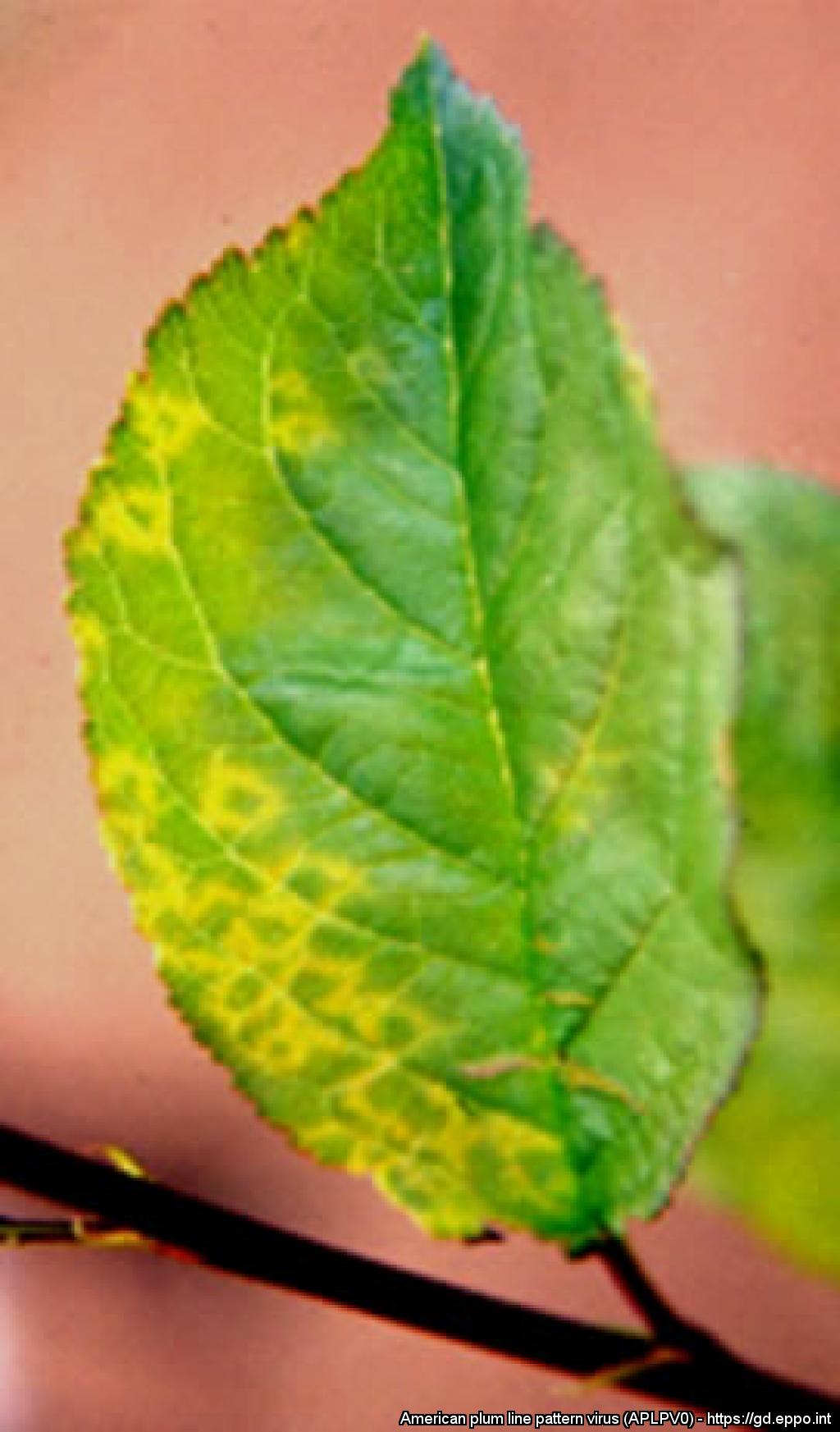
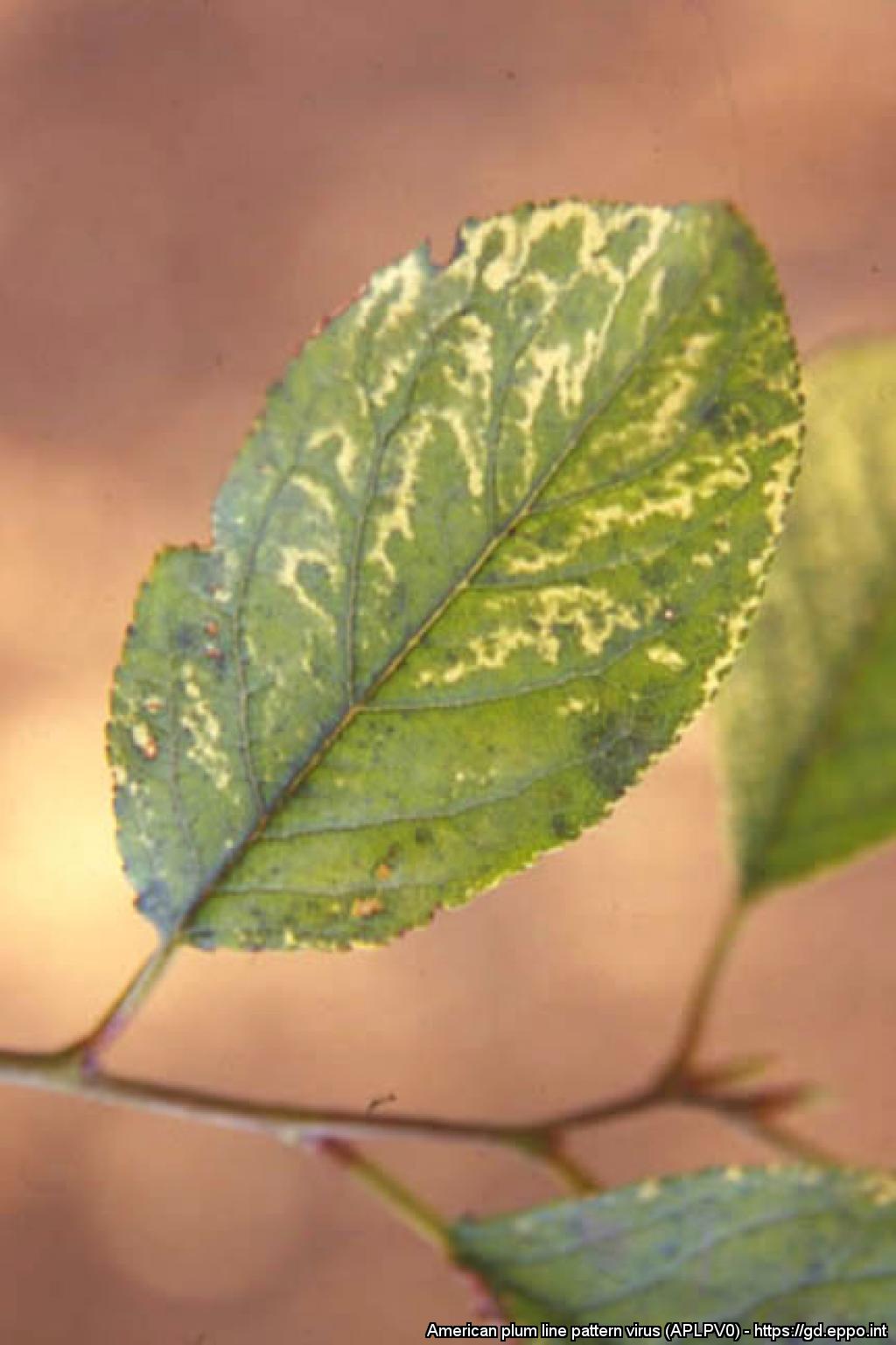
By summer, the yellow mottling increases and fades to creamy-white (Figure 3).
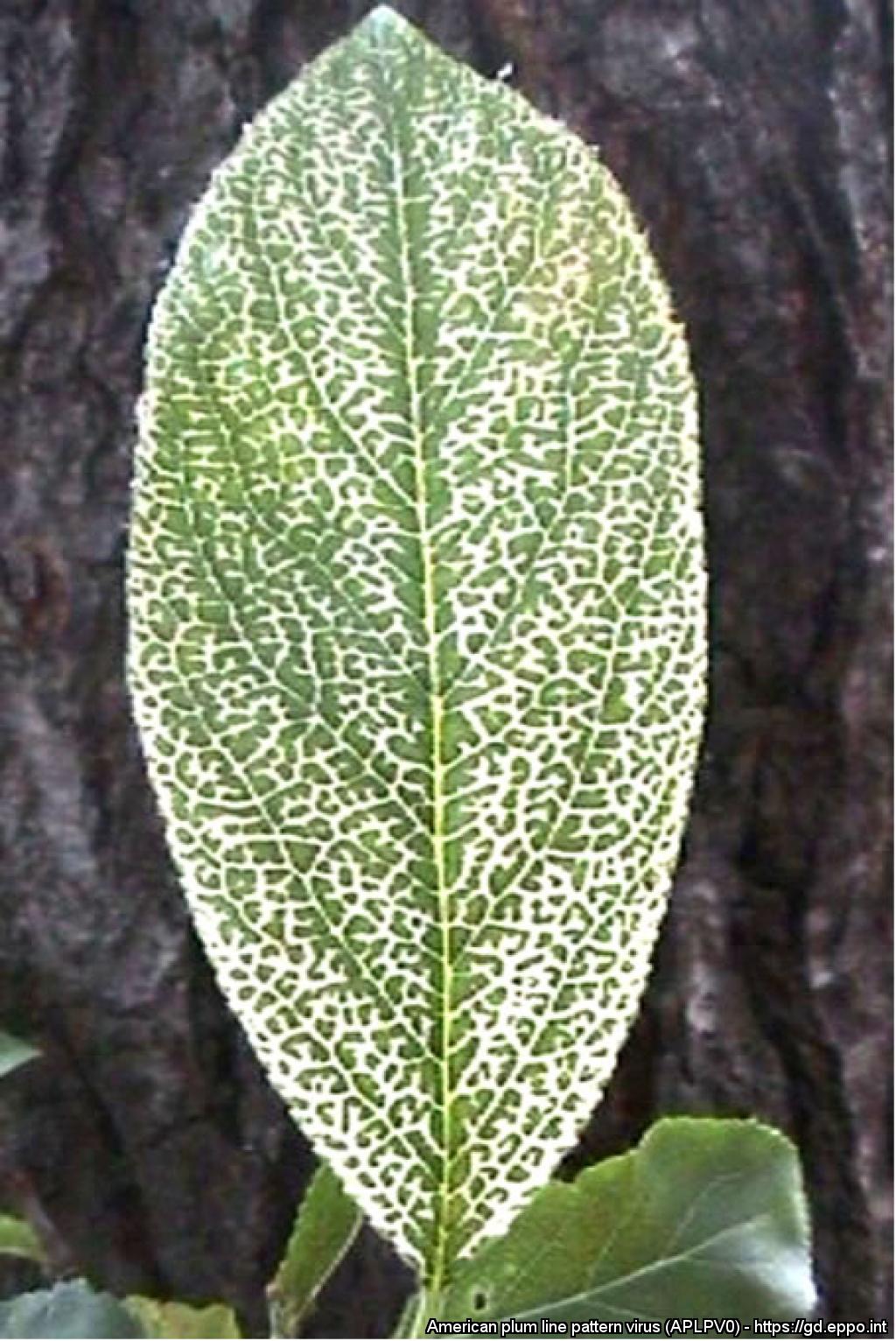
Peach symptoms
Most cultivars of peach (Prunus persica), exhibit light-green and wavy lines during the spring and early summer (Figure 4). Later, the lines form various shapes, rings, confluent rings, nets or 'oak-leaf' patterns (Figure 5).
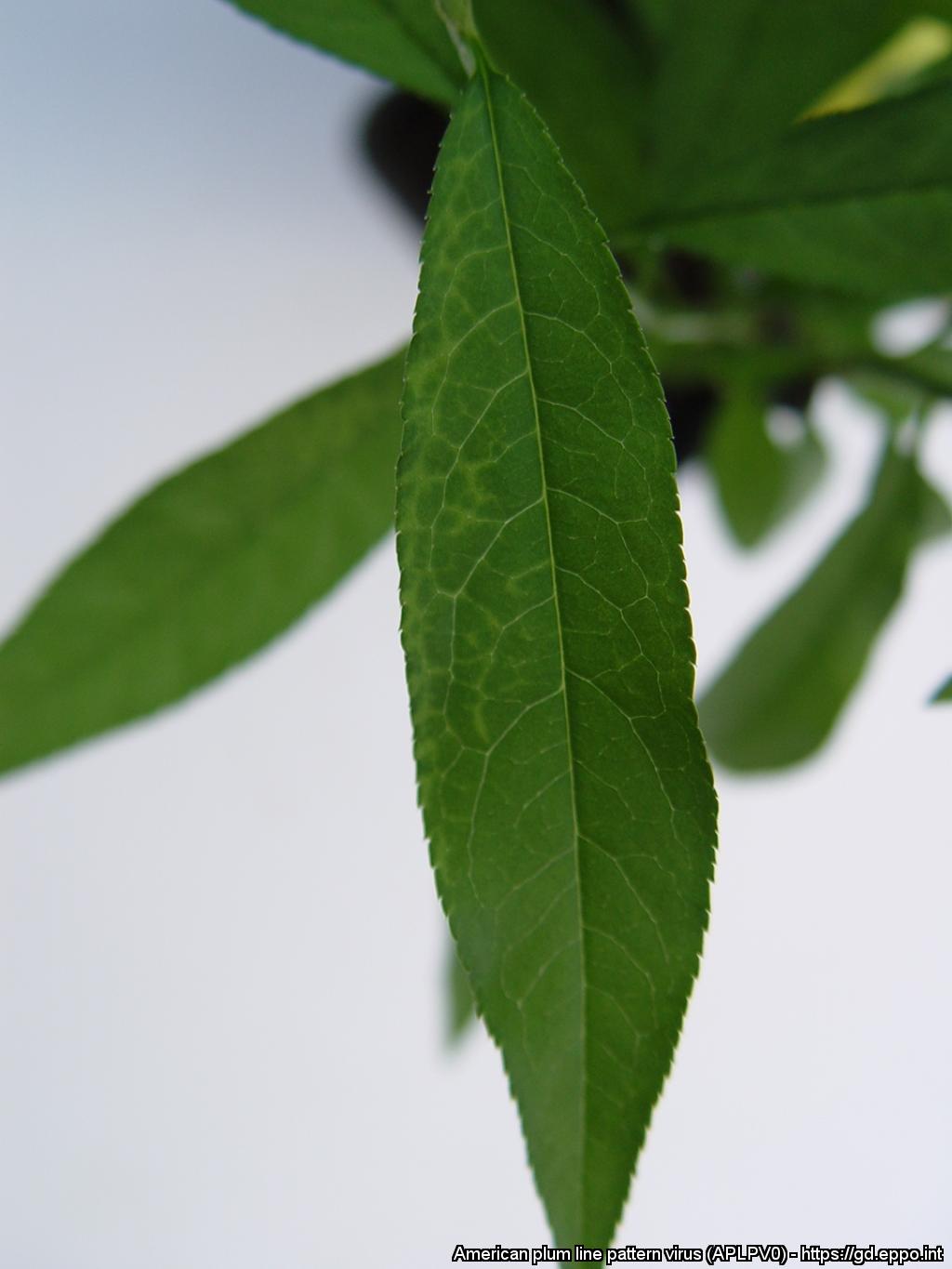
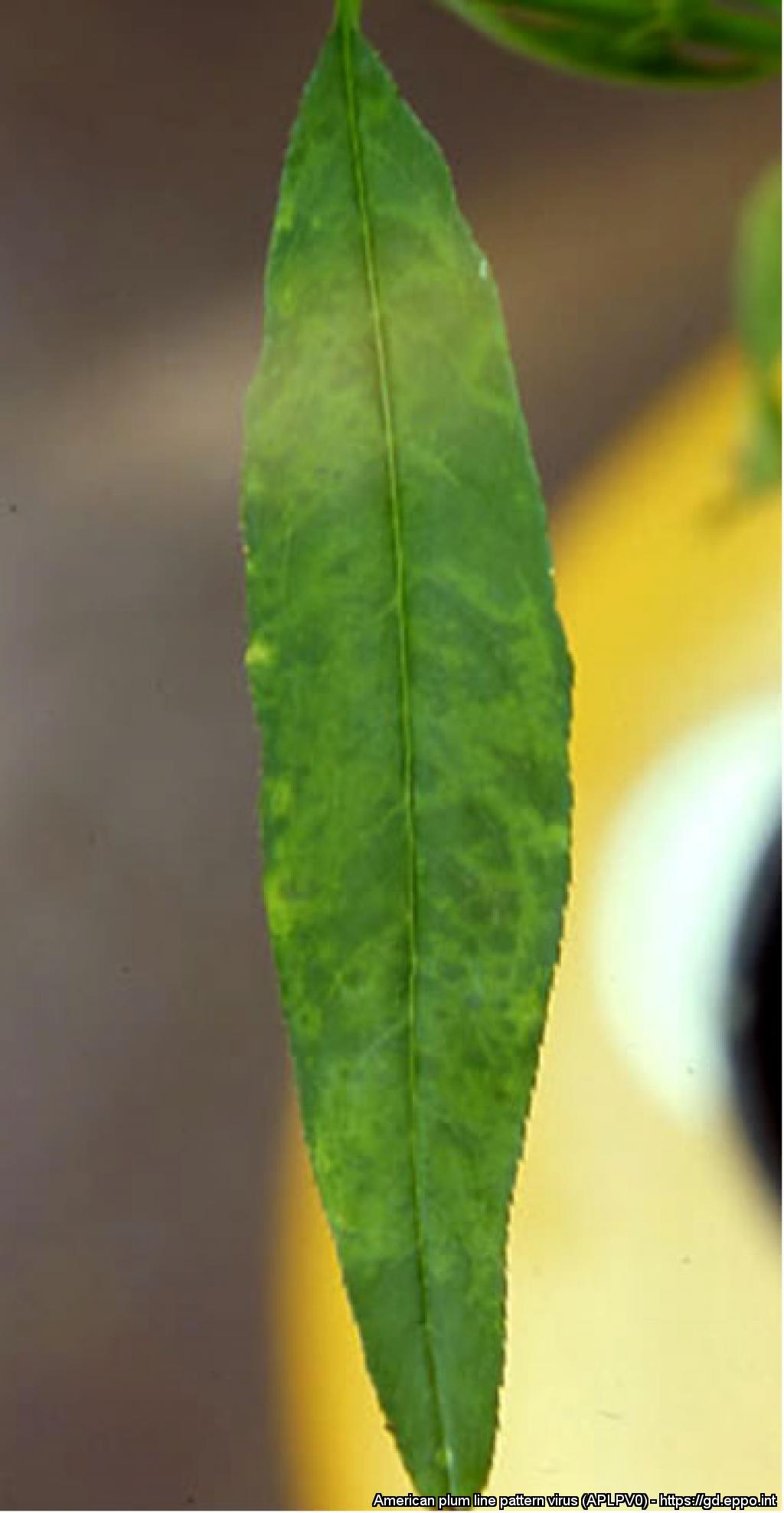
Ornamental cherry symptoms
Symptoms in Japanese ornamental cherry (Prunus serrulata) often include formation of 'oak leaf' patterns, although symptoms may also include chlorotic, golden or white rings.
Yellowish discoloured areas can also appear in conjunction with vein banding.
Discoloured areas can be golden or pinkish.
Impact of APLPV
Symptoms don't cause any appreciable loss of productivity.
In plum and peach, signs of disease often disappear by late summer, so control measures might not be required. But disease symptoms in ornamental cherry can reduce aesthetic value.
Also, APLPV can have a greater impact when co-infecting with other viruses such as the prune dwarf virus.
Spread of disease
The means of natural spread is unknown, but APLPV can be transmitted mechanically, through grafting and possibly pruning.
The virus is probably not seed-borne and international spread is likely by movement of infected planting material.
Controlling APLPV
Diseases caused by viruses cannot be directly controlled via spraying, so only use planting material certified or tested to be free of the virus.
To prevent the spread of APLPV in your property:
- consider removing diseased trees
- ensure staff and visitors adhere to on-farm biosecurity and hygiene practices
- keep records of disease histories so the impacts of pests and diseases can be monitored and traced.
Also disinfect tools and farm machinery while wearing suitable personal protective equipment.
Reporting an unusual plant insect pest or disease
Report any unusual plant pest or disease immediately using our online reporting form or by calling the Exotic Plant Pest Hotline on 1800 084 881. Early reporting increases the chance of effective control and eradication.
Please take multiple good quality photos of the pests or damage to include in your report where possible, as this is essential for rapid pest and disease diagnosis and response.
Your report will be responded to by an experienced staff member, who may seek more information about the detection and explain next steps.
Report onlineImage sources and references
Agriculture Victoria (2016) PIDS, American plum line pattern virus (APLPV) – 03/11/2016, CCEPP Secretariat.
EPPO, European and Mediterranean Plant Protection Organization, (2016) American plum line pattern virus (APLPV0), retrieved from EPPO (Accessed 6 January 2022).
Oregon State University (n.d.) Cherry (Prunus spp.), Virus-induced Cherry Decline (Accessed 6 January 2022).